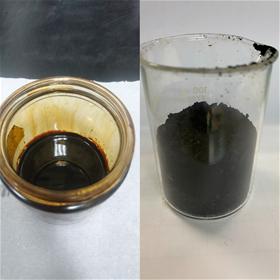
This year happens to be the Year of the Pig, but unceasing news of the African swine fever (ASF) epidemic in China and anti-pig border control measures have put the people of Taiwan under great strain. The ASF is mostly contracted through infection from direct contact, if the pigs are fed with kitchen waste containing pork products from the ASF epidemic area, it will increase the risk of ASF transmission. In the face of the rampant ASF epidemic, some counties and cities have placed a full ban on feeding kitchen waste to pigs. Subsequently, county and municipal governments, schools and institutions, and restaurants will be facing removal and disposal problems due to the large amount of kitchen waste.
Metal Industries Research & Development Centre (MIRDC) has developed a high temperature and high pressure hydrothermal liquefaction technology. At a pressure of 5 to 200 kg and a temperature of 180 to 370℃, these conditions are superior to those of conventional sterilization equipment, and can effectively convert high-moisture pig feed kitchen waste or compostable kitchen waste into biochar or biofuel in 30 minutes. Biochar can be used as soil improver, while a 10% ratio of biofuel can be mixed with heavy oil for mass-burning to reduce the concentration of SOx emission. This technology will effectively solve the problem of kitchen waste disposal, in addition, it is hoped that this application can promote the development of domestic hydrothermal liquefaction technology to accelerate the diverse industrial application of Taiwan's biomass energy and enhance the proportion of renewable energy applications, so that we can measure up to international standards.
About 770,000 metric tons of pig feed kitchen waste and 200,000 metric tons of compostable kitchen waste are produced each year in Taiwan, due to the high moisture content, the kitchen waste is not suitable for burning in incinerators; while composting has problems such as requirements of large land area and bad odor generated in the process. The use of hydrothermal liquefaction technology can convert kitchen waste into energy, solve waste disposal problems and convert it into renewable energy, while also reducing disposal costs, fossil fuel use, and decreasing greenhouse gas emissions to achieve the goal of circular economy.